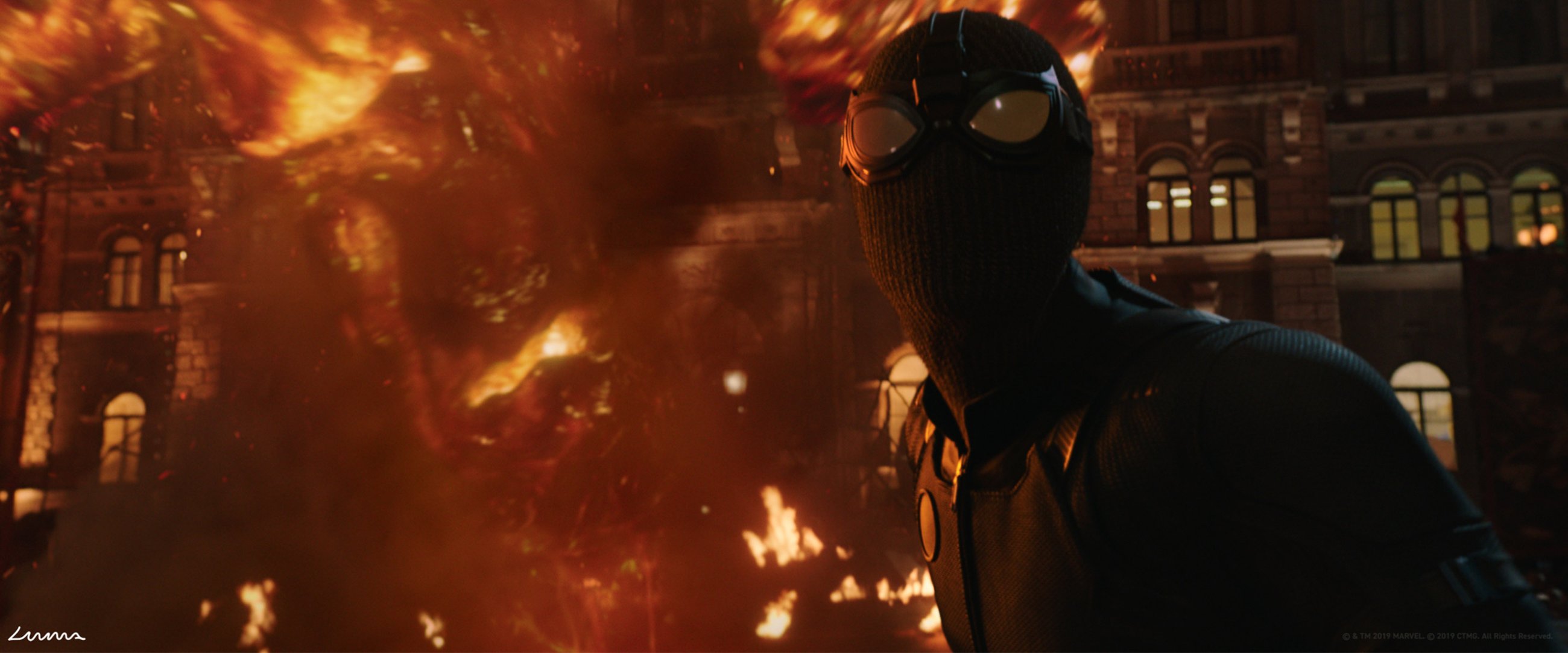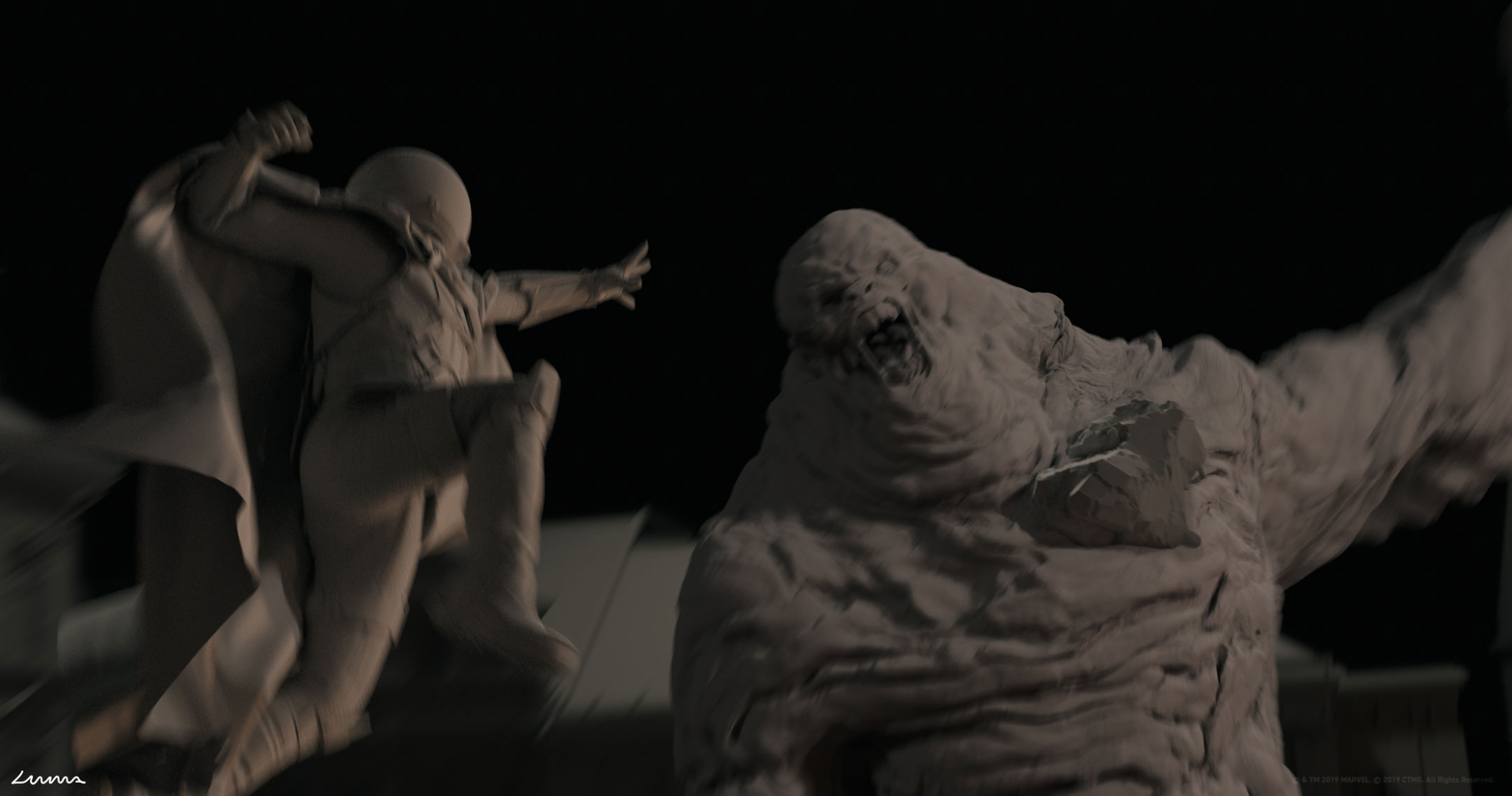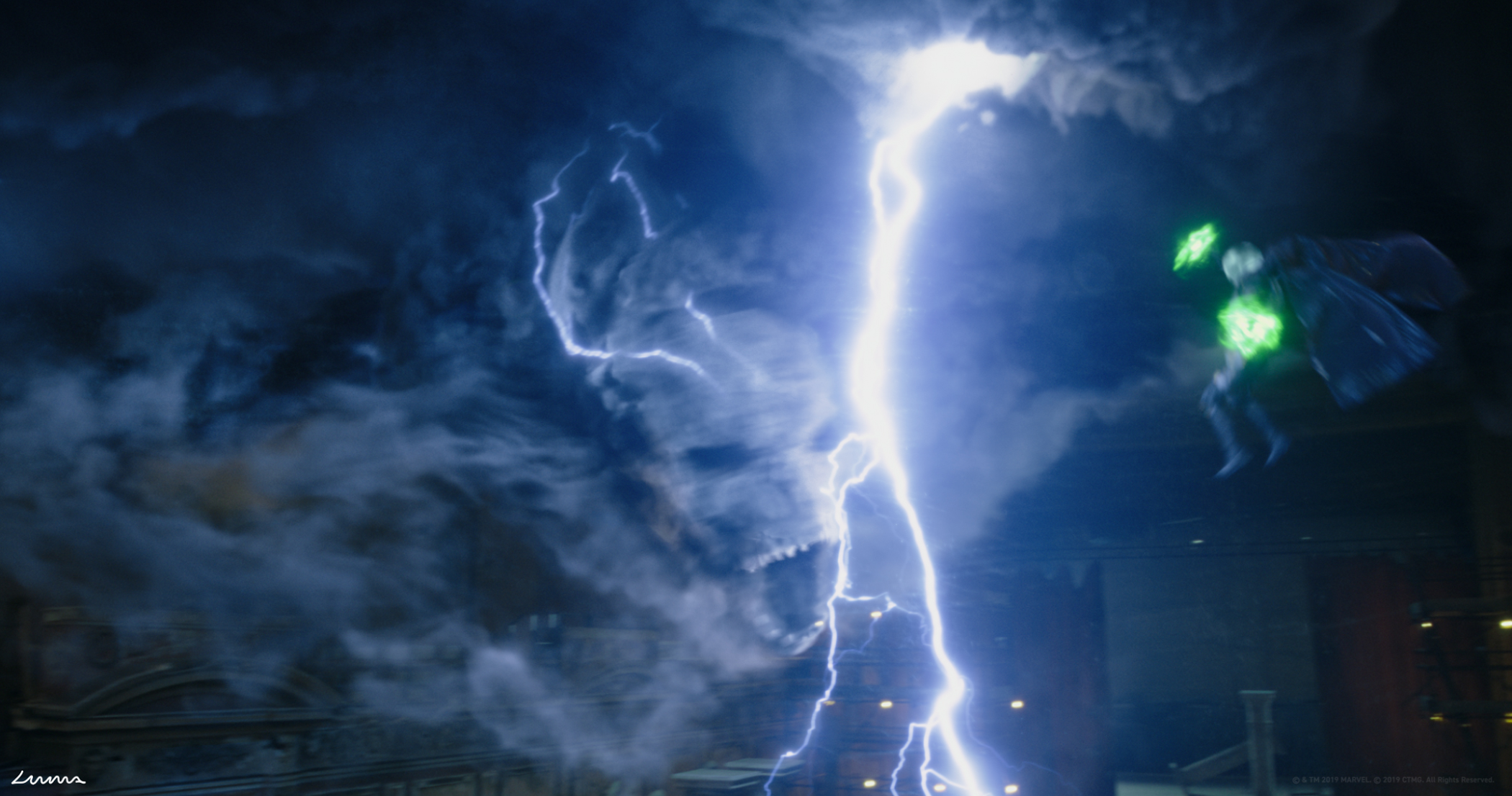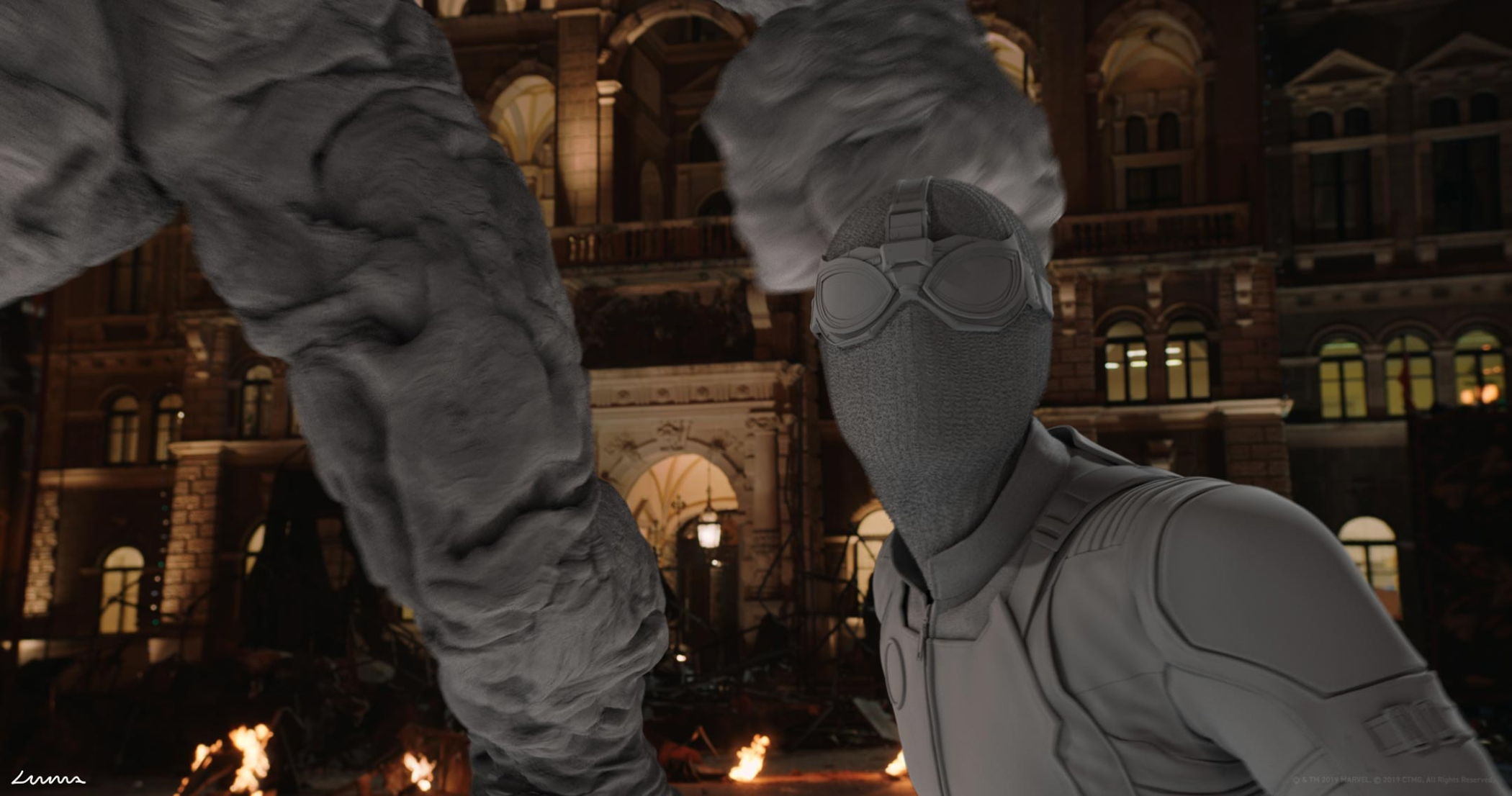With great compute power: Rendering ‘Spider-Man: Far From Home’ on Google Cloud

Todd Prives
Product Manager, Cloud Rendering
In Spider-Man: Far From Home, Spidey leaves the friendly confines of New York City and goes on a school trip to Venice, Prague, Berlin and London (but not Paris). While working on the visual effects (VFX) for the film, Luma Pictures also left the comfort of its on-premises Los Angeles data center, moving its render pipeline to Google Cloud, where the movie’s Air and Fire Elemental characters (a.k.a., Cyclone and Molten Man) were generated.


“This was remarkable,” said Michael Perdew, a VFX producer at Luma Pictures. Initially, Luma didn’t think the cloud would be a good fit for the latest Spider-Man. “The big technical challenge here was that both of these characters were simulations,” he said. Historically, simulations took too much CPU, bandwidth, and disk space to be rendered in a time- or cost-effective manner outside of a local compute farm. Syncing terabytes of cache data from on-premises to the cloud can take several hours if you have limited bandwidth. In addition, Luma hadn’t yet found a cloud-based file system that could support the massive compute clusters you need to render simulations.
But this was a big job, and “we had to find a way to render more than our local farms could handle,” Perdew said. So they put their heads together and developed a workflow to make it work in the cloud.
As it turned out, the cloud turned out to be the perfect place for this project—specifically for Cyclone. In Google Cloud, Luma leveraged Compute Engine custom images with 96-cores and 128 GB of RAM, and paired them with a high-performance ZFS file system. Using up to 15,000 vCPUs, Luma could render shots of the cloud monster in as little as 90 minutes—compared with the 7 or 8 hours it would take on their local render farm. Time saved rendering in the cloud more than made up for time spent syncing data to Google Cloud. “We came out way ahead, actually,” Perdew said.


Leveraging the cloud also pushed Luma to get savvy with their workflow. By breaking up the Cyclone simulations into pieces, they could work around the clock—and around the world—tapping into the speed of our global fiber network that moves data around the planet. When the L.A. team slept, VFX artists in Luma’s Melbourne, Australia office tweaked animations and simulation settings, and triggered syncs to the cloud, getting the updated scenes ready for the L.A.-based FX and lighting teams. When L.A. artists arrived in the office the next morning, they could start the simulation jobs in Google Cloud, receiving data to review by lunchtime.
In the end, Luma completed about 330 shots for Spider-Man: Far From Home—with about a third created in the cloud. In addition to creating Cyclone and Molten Man, Luma designed Spider-Man’s Night Monkey suit, created an elaborate CG environment for the Liberec Square in the Molten Man Battle scene, and collaborated on destruction FX in Mysterio’s lair sequence.


Now that Luma’s work on Spider-Man is done, the studio is ramping up to take advantage of other GCP features. For example, its artists use an in-house proprietary tool called Rill that automates the process of seeing updated character animations through full simulations and render. This tool is currently deployed on an on-prem Kubernetes cluster, which they are exploring migrating—as well as other tools—to Google Kubernetes Engine (GKE) in the cloud. “Having more day-to-day services in the cloud will have all kinds of reliability benefits,” Perdew said, for example, protecting them against the power outages that occasionally happen in Luma’s Santa Monica office.
Additionally, Luma will install a direct connection to the Google Cloud Los Angeles cloud region (which celebrated its one-year anniversary this summer) for future productions, more bandwidth, and reduced latency to Google Cloud. The team hopes this will open the door to all kinds of possibilities; for example, Perdew is excited to try out remote workstations. “The industry keeps on changing the type of computer you need per discipline to do good work,” he said. “Having the flexibility to upgrade and downgrade an individual artist on the fly…as a producer, that makes me giddy.”
Here at Google Cloud, we’re also giddy to have helped bring Spider Man’s latest adventure to the big screen. But with great (compute) power comes great responsibility—we’re working diligently to make Google Cloud a great place to render your upcoming production. To learn more about Google Cloud in the media and entertainment industry, swing on over to our Rendering Solutions page.
